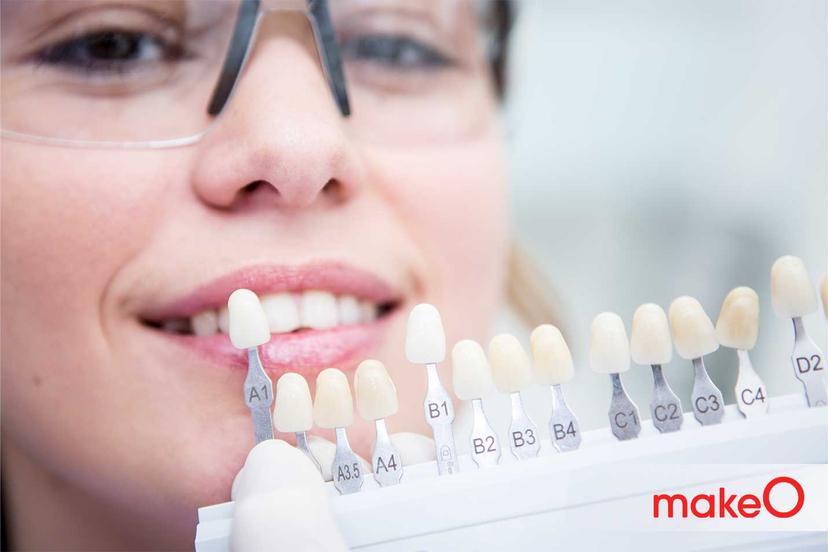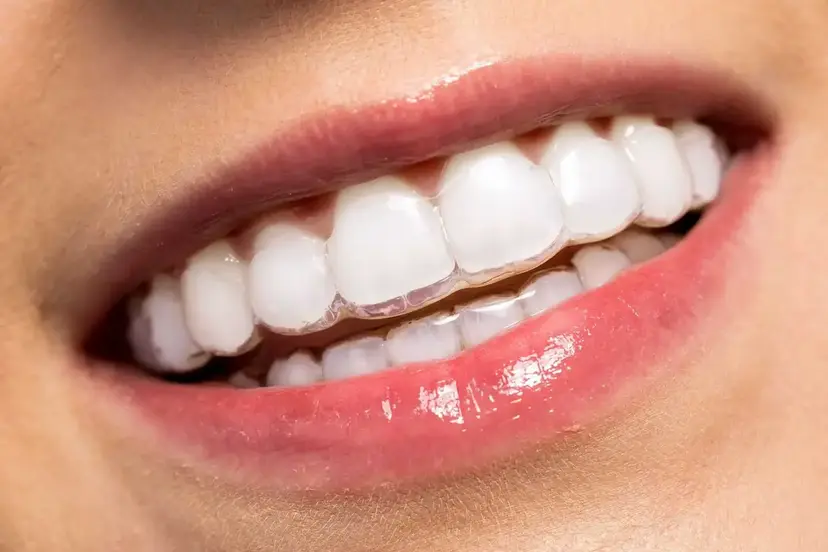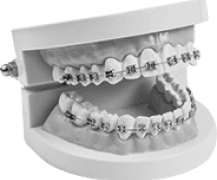MakeO blog
We know the joy of flaunting a radiant smile, and for many, the road to that smile is paved with orthodontic brackets. These brackets are typically square metal pieces that are attached to the front and sides of teeth. They are directly bonded to the enamel and are used to help move the teeth. Seems straightforward right? But in reality, stainless steel brackets are not the only kind of brackets available in the market! There are around 9 different types of orthodontic brackets that you can choose from!
Welcome aboard, let's dive into this fascinating world, and by the end, you might just find the ideal solution to enhance your smile.
What Are the Different Types of Orthodontic Brackets?
The primary aim of orthodontic brackets is to align your teeth and perfect your smile. But brackets aren't a one-size-fits-all thing. They come in different materials and styles, each designed to suit specific needs. Let's look at some common types of orthodontic brackets:
1. Ceramic Brackets
Ceramic brackets are known for their aesthetic appeal. They are made of a ceramic material that matches the colour of your teeth, making them less noticeable than their metal counterparts. However, they're slightly more delicate and require careful handling.
2. Cobalt Chromium Brackets
Known for their high strength and durability, cobalt chromium brackets are resistant to corrosion. They are less flexible than stainless steel brackets, providing consistent pressure on the teeth for movement.
3. Composite Brackets
Composite brackets are similar to ceramic brackets in that they blend with your natural teeth. They are made of composite plastic, which can resist staining better than ceramic brackets. However, they might not be as sturdy as metal brackets.
4. Gold Brackets
For those who like to add a touch of luxury to their orthodontic journey, gold brackets are an excellent option. They're typically stainless steel brackets coated with gold, offering the same strength but with a distinctive, flashy appearance.
5. Lingual Brackets
If invisibility is your need, lingual brackets are for you. They are affixed to the back of your teeth, making them virtually invisible from the front. However, they might take a little getting used to and require diligent cleaning.
6. Plastic Brackets
Plastic brackets are typically used for temporary orthodontic needs. They are not as durable as metal or ceramic brackets and might discolour over time.
7. Self-ligating Brackets
This innovative bracket type eliminates the need for elastic or metal ties as it comes with a built-in clip to hold the archwire. Self-ligating brackets can reduce friction, make cleaning easier, and potentially shorten treatment time.
8. Stainless Steel Brackets
For the veterans of orthodontics, stainless steel brackets are durable and cost-effective. While not as subtle as ceramic or lingual brackets, they are robust and easy to maintain.
9. Titanium Brackets
If you're seeking strength and resistance to corrosion, titanium brackets might be your pick. These brackets are lighter and less allergenic compared to stainless steel, making them suitable for individuals with metal allergies.
As you can see, there's a buffet of options when it comes to orthodontic brackets. The choice depends on your specific needs, aesthetic preferences, and budget. Remember, your orthodontist is your best guide to help you navigate these choices. They can provide advice tailored to your unique dental needs and lifestyle considerations.
Factors to Consider While Choosing the Orthodontic Bracket
Choosing orthodontic brackets isn't as simple as picking your favourite colour. Several factors come into play:
- Aesthetics: If you're conscious about the appearance of brackets, you might prefer ceramic or lingual brackets.
- Comfort: Lingual brackets may be less comfortable compared to stainless steel or ceramic brackets due to their placement behind the teeth.
- Maintenance: Stainless steel brackets are typically easier to clean and maintain.
- Cost: Stainless steel brackets tend to be less expensive than ceramic or lingual brackets.
The Final Verdict
Now that you know about the different types of orthodontic brackets, you might be wondering if there’s a more innovative, hassle-free solution. Enter makeO toothsi clear aligners.
makeO toothsi clear aligners are designed to gently align your teeth, crafting a flawless smile. They are transparent, which makes them practically invisible. They're also removable, which means no food restrictions, no inconvenience while brushing, and no discomfort. Furthermore, clear aligners have fewer appointments and emergencies, making them a fantastic choice for busy lifestyles.
In the realm of orthodontic treatment, makeO toothsi clear aligners have redefined convenience, aesthetics, and effectiveness. They align your teeth with precision, offering a comfortable and safer journey towards your radiant smile.
In conclusion, the world of orthodontic brackets is vast and diverse. But remember, at the end of the day, the aim is to create that beautiful smile. And with makeO toothsi clear aligners, you get a technologically advanced, convenient, and safer path towards that perfect grin you've always dreamt of. Now, isn't that something worth smiling about?
FAQs
What are the different types of orthodontic brackets?
There are primarily three types of orthodontic brackets: stainless steel, ceramic, and lingual brackets. Each comes with its own set of pros and cons.
Are ceramic brackets a good choice?
Ceramic brackets are a popular choice due to their aesthetic appeal. They blend in with your natural teeth, making them less visible than stainless steel brackets. However, they are slightly more delicate and need extra care.
What are lingual brackets?
Lingual brackets are a type of orthodontic bracket that is fixed behind the teeth, making them virtually invisible. They are less visible than other types but may be less comfortable and harder to clean.
Are stainless steel brackets better than other types?
Stainless steel brackets are durable, robust, and easy to maintain. However, they are more visible than ceramic or lingual brackets. The choice depends on your personal preferences and lifestyle needs.
related categories
Related articles

This Diwali, Smile Bright With makeO Teeth Whitening Kit

Types of Braces: Removable vs Fixed Braces, Which is Right For You?

Dr. Pravin Shetty: Pioneer in Lingual Orthodontics & Innovative Smile Solutions
How do I Know I’m the Right Candidate for makeO toothsi Teeth Aligners?

